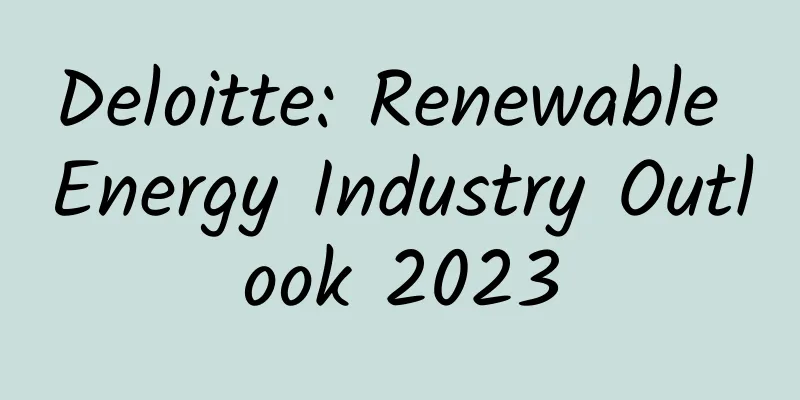Deloitte: Renewable Energy Industry Outlook 2023

|
U.S. renewable energy growth slows in 2022 as supply chain disruptions, trade policy uncertainty, inflation, rising interest rates, and interconnection delays lead to higher costs and project delays. Many of these challenges are likely to extend into 2023, creating strong headwinds. But growth could accelerate, driven by strong demand and the record-breaking amount of clean energy incentives in the Inflation Reduction Act (IRA). Growing demand in 2023 is likely to exacerbate supply chain constraints and interconnection bottlenecks, further pushing up prices and extending project timelines. Five renewable energy industry trends to watch Growing clean energy component manufacturing could ease supply chain hurdles over time U.S. manufacturing is currently unable to meet the renewable energy sector’s demand for clean energy components supported by a secure and sustainable domestic supply chain. New clean hydrogen economy could open the way for renewable energy suppliers Long-standing interest in green hydrogen was ignited with the enactment of the IRA in August 2022. The law provides a $3 per kilogram tax credit on qualifying “clean” hydrogen, which could make it price-competitive with higher-carbon “grey” hydrogen in much of the country. IRAs help incentivize renewable energy providers to pursue opportunities in low-income communities So far, the clean energy transition has focused largely on wealthier Americans, who benefit from incentives like rooftop solar or tax credits for electric vehicles, while many low-income communities have been left behind. Renewable energy industry focuses on managing growing cyber risks One sign of the renewable energy industry’s maturing is that it is increasingly being targeted by cyberattacks. Offshore wind industry tackles challenges to achieve rapid growth The U.S. offshore wind project development pipeline has grown to more than 40 gigawatts (GW) of potential capacity by mid-2022 across 12 states. Currently, only 42 megawatts (MW) of capacity is in operation, with about 1 GW under construction and nearly 19 GW in the permitting stage. Another 20 GW is in the site selection and planning stages and may take years to develop. The next few years may therefore be critical in addressing challenges to unlock growth. |
<<: 1/3 of PC gamers choose 1080p. What about you?
Recommend
Tencent’s 6-year operations expert teaches you the SNS viral marketing model!
This article comes from the content shared in the...
The changes of HTML tag input in iOS 15 are shocking
[[440196]] A long time ago, probably a few years ...
This is the first time a human probe has been so close to the sun! Why hasn't it melted?
Produced by: Science Popularization China Author:...
my country adds three more world irrigation engineering heritage sites
On the afternoon of November 26, Beijing time, at...
Can $30 million solve global warming? Expert: I'm worried that this company will run away with the money
It only costs $10 to offset the impact of 1 ton o...
Tianshu Zhihu Good Products Promotion Episode 3
Tianshu Zhihu Good Products Bringing Goods Third ...
How can you fight cockroaches in Guangdong?
How can you fight cockroaches in Guangdong? As we...
What new features will the iPhone have in the future? An inventory of Apple's new patents
Since the release of iPhone 6s/6s Plus, rumors ab...
Short video ads are very popular, the key is how to get users to pay for them!
Since mid-2016, short video feeds and Native Ads ...
Many people died suddenly from pulmonary embolism while riding long-distance buses! How to diagnose and prevent it?
As the Spring Festival holiday comes to an end, w...
Brand New Year Marketing War
Key points As the Spring Festival approaches, con...
"Transformers" wants to challenge Toyota's "Earth-1". Can it create a miracle?
I believe that the "Transformers" serie...
iPhone 6 two-week experience: battery life has not improved
The iPhone 6 has been launched for a while. It st...
What is Baidu Wenku promotion? How to promote Baidu Wenku?
Document libraries are a major way to spread info...
How to use Traffic Treasure? Is Traffic Treasure useful for increasing traffic on the website?
For online marketers, consultation and transactio...









